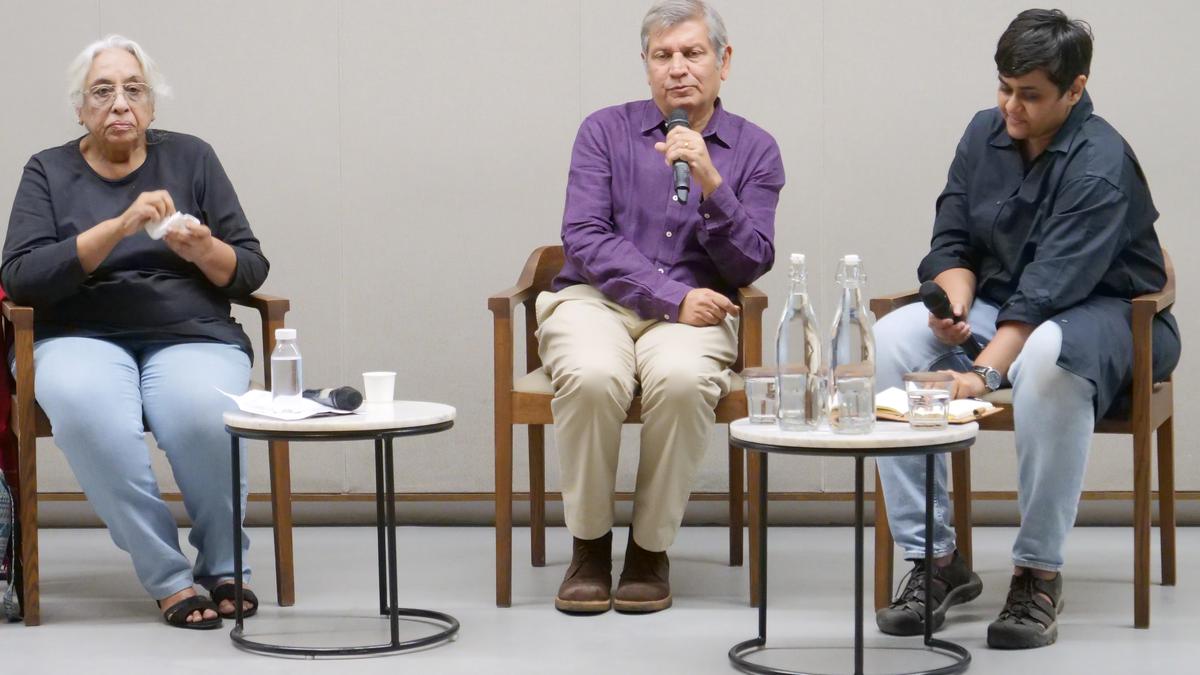
The contours of the mental health landscape of Bengaluru
The Hindu
Panel discussion on mental health in Bengaluru, featuring NIMHANS history and challenges, family caregiving, and positive future outlook.
Sometime in the 1980s, a man barged into the cockpit of an Indian airliner, brandishing a plastic gun, claiming that it was being hijacked. “The plane was forced to land in Bengaluru,” recalled renowned psychiatrist Dr Sanjeev Jain at a panel discussion titled “Minding the City: How Can Bangalore Do Better for the Mental Health of Its Residents?” held at the Bangalore International Centre (BIC) in Domlur. When the man, a patient of the National Institute of Mental Health and Neuro-Sciences (NIMHANS) who was having a manic episode, came out of the plane, he pulled out his NIMHANS card, almost as if the document provided some indemnity.
He was brought to the institute, continued the Bengaluru-based clinician and teacher, who shared the stage with sociologist and mental health rights activist Dr Nirmala Srinivasan and writer and editor Kavya Murthy at the event.
“NIMHANS had become part of the local ecology of the whole city,” he said, recalling a time when simply showing a NIMHANS OPD slip was enough to get one a free bus fare to the institute. “You didn’t need a disability card or stamps from various authorities,” he said. According to him, even though we are a more open, technologically-savvy society today, this kind of graciousness for people coming to the hospital and their families has reduced over the years.
Anecdotes such as this constantly popped up during the panel discussion, furthering a nuanced, complex discussion on mental health, which veered from the history and evolution of the institute to the positive effect of green spaces on mental health, the role of family in caregiving, the limitations of legislation, the treatment gap in mental health and so much more. “There is a lot of noise about mental health,” pointed out Dr Srinivasan. She said she saw this as a positive development as was the increased sensitivity towards mental health. “I look forward to a bright and positive future for mental health.”
However, one thing that disturbs her is the tendency to ignore the distinction between the broad spectrum of mental health and mental health disorders within it. “That is not happening. I look forward to that taking place, and I am sure that the trend is towards that,” she said, adding that accessibility is another important thing that needs to be addressed. “There should be distributive justice of services,” she stated.
Murthy, who was moderating the session, started by asking about the landscapes important for mental healthcare to work, the unique infrastructure of open pavilions and trees at NIMHANS and its close relationship with Bengaluru. “Could you tell us about what you have explored in your work and how you look at the individual, society and institution?” she asked.
Dr Jain responded by briefly tracing the institution’s journey. “It starts off at the Hospital for Peons, Paupers and Soldiers in the Cantonment, and it moves to another side of the city, what is now the State Bank of Mysore,” he said. In the 1930s or so, as that part of town became more crowded, the asylum moved to a hillock between Lal Bagh and Basavangudi, close to the Victoria Hospital.

The Karnataka government has drafted a comprehensive master plan for the integrated development of Kukke Subrahmanya temple, the State’s highest revenue-generating temple managed by the Hindu Religious Institutions and Charitable Endowments Department. The redevelopment initiative is estimated to cost around ₹254 crore and aims to enhance infrastructure and facilities for devotees.












